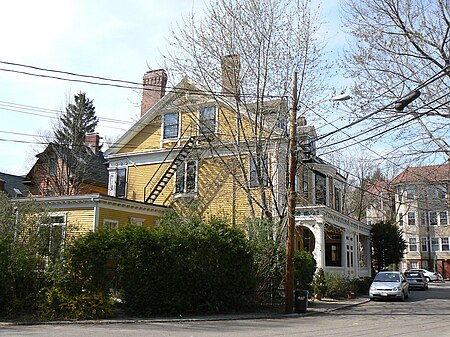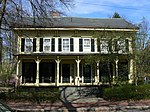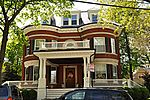Stillman Willis House
Cambridge, Massachusetts Registered Historic Place stubsHouses on the National Register of Historic Places in Cambridge, Massachusetts

The Stillman Willis House is an historic house in Cambridge, Massachusetts. This 2+1⁄2-story house was built in 1839, and was originally located nearby on Massachusetts Avenue. It was moved to its present location in 1883, at which time it was extensively modernized, overlaying its Greek Revival features with Italianate and Colonial Revival styling. Surviving Greek Revival elements include corner pilasters and an entablature, while later features include bracketed window cornices and extensive decorative woodwork on the porches.The house was listed on the National Register of Historic Places in 1982.
Excerpt from the Wikipedia article Stillman Willis House (License: CC BY-SA 3.0, Authors, Images).Stillman Willis House
Linnaean Street, Cambridge
Geographical coordinates (GPS) Address Nearby Places Show on map
Geographical coordinates (GPS)
| Latitude | Longitude |
|---|---|
| N 42.384444444444 ° | E -71.120833333333 ° |
Address
Linnaean Street 12
02140 Cambridge
Massachusetts, United States
Open on Google Maps










